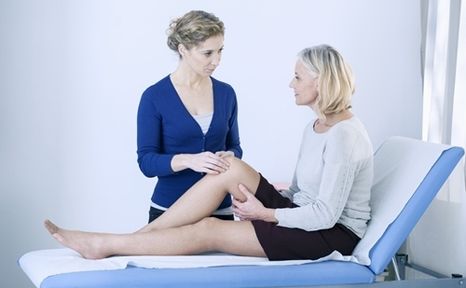

Check out this information about the condition that affects over 27 million people in the U.S.

If you have been diagnosed with the most common form of arthritis, osteoarthritis, there are some things you need to know as you look to adjust your lifestyle. Check out this information about the condition that affects over 27 million people in the U.S.:
According to the Cleveland Clinic, osteoarthritis is also known as degenerative joint disease or age-related arthritis, since it is more common in older people. It means that joints are inflamed and cartilage tissues have broken down. Affected areas are usually swollen, painful and can appear deformed.
Osteoarthritis is separated into two categories. The primary form refers to the general disease that develops over time in the knees, thumbs, spine, hips and fingers. This version of the disease is found in more women than men, and symptoms typically appear after menopause. It can also be caused by hereditary factors and obesity.
Secondary osteoarthritis means that the condition came about after a joint experienced injury or inflammation. People who regularly injure or apply stress to their joints, such as athletes, are more likely to develop this type of osteoarthritis.
When you have osteoarthritis, as cartilage breaks down the fluid cushion that lubricates joint movement breaks down too. Since these are essential for bone motion, you will experience stiffness and pain when you move. As the condition worsens, bones can begin to break down as well, and growths known as spurs may begin to appear, according to The Arthritis Foundation. When this happens, pieces of bone and cartilage often chip off. If you do not take steps to help prevent it, you may eventually experience painful bone-against-bone rubbing.
Simply stretching may make a big difference in easing your arthritis pain, since stretching warms up your joints before you use them. The Cleveland Clinic recommends getting plenty of exercise. Though it may sound unappealing when your joints are aching, it is an important part of keeping you strong and relieving your pain. Low-impact strength routines and water activities are some of the best ways to improve joint health. Physical activity can also help you lose weight, which will take pressure off your joints and help reduce pain.
Your physician may recommend the use of a supportive device that is specially designed to improve the quality of life in people experiencing arthritis symptoms. These can offer welcome relief, but should be used no more than needed so that you do not develop a dependency on them. Examples include braces, canes, shoe lifts and crutches.
Although there are no medications to cure or reverse osteoarthritis itself, your doctor should be able to help you figure out which pain relievers will work best with your condition. Depending on the severity of your discomfort, your health care provider may suggest an over-the-counter option or prescribe something stronger.
Finding the Right Treatment for Your Osteoarthritis of the Knee
Osteoarthritis and Rheumatoid Arthritis: Understanding the Differences
5 Tips to Staying Active with Osteoarthritis
Copyright © www.orthopaedics.win Bone Health All Rights Reserved